- LAGRANGIAN
- Posts
- Issue 70 | Breaking Space News: Sept 28 - Oct 04, 2025
Issue 70 | Breaking Space News: Sept 28 - Oct 04, 2025
For the First Time, NASA and China's CNSA Coordinated to Avert a Satellite Collision. This Week in Space News: Spectral Image From a Binary Star System, China's Probe Selfie, A Black Hole Jet, Moon-Forming Discs, Tumbleweed Rover Design and Expanding Cooperation Between European and Asia‐Pacific Space Agencies. Plus: NASA Employees Furloughed, Germany, Canada Space Defense Investments, Weather Updates From a Free-Floating Rogue Planet, A Satellite Visualization Tool, and More.
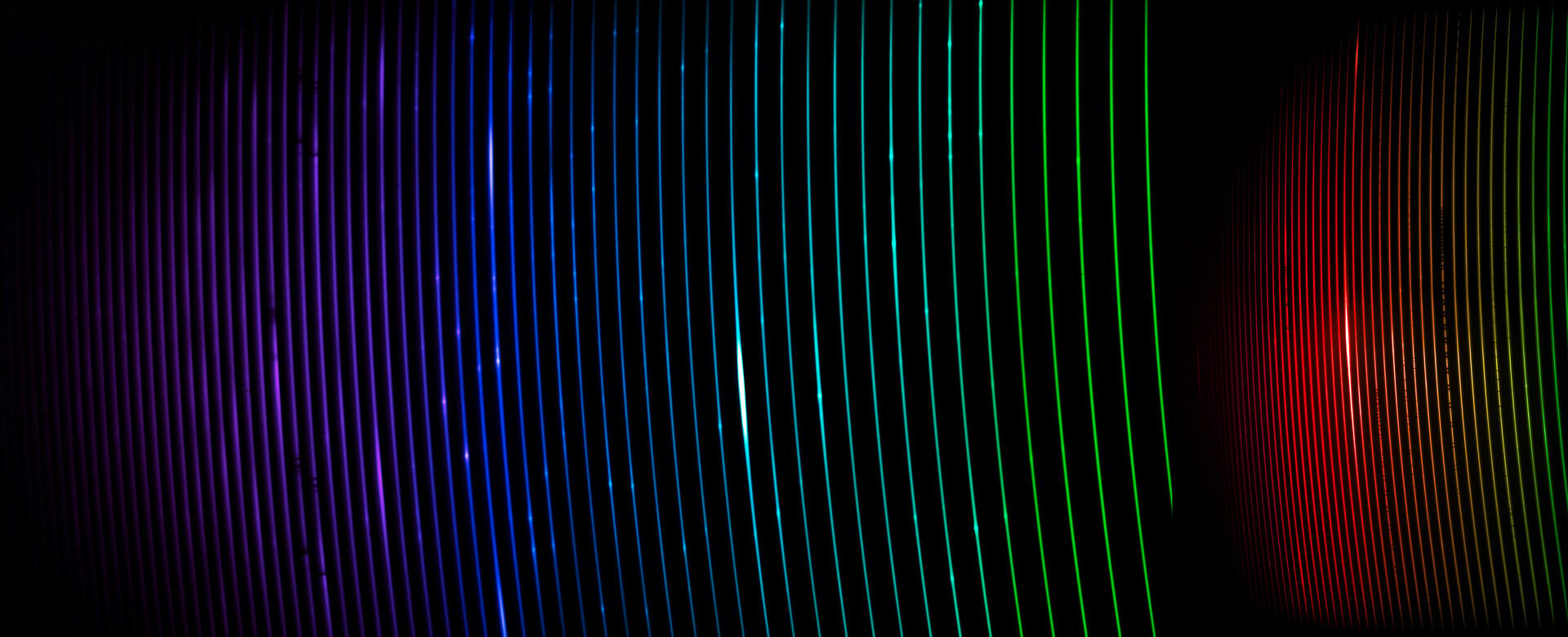
Thanks for joining, Explorer🚀
The 2025 International Astronautical Congress, held in Sydney last week, was responsible for an active commercial space sector, also driven in part by notable defense-related movements. Also don’t miss some breathtaking images!
Click the link below to read the unclipped publication. ↓
Let’s jump into it.
James Webb Telescope Detects Methane Gas on Dwarf Planet Beyond Neptune
James Webb Telescope Detects Carbon‑Rich Moon‑Forming Disk Around Distant Exoplanet
Far Side Lunar Samples Returned by Chang’e‑6 Offer Clues to Moon’s Geological Divide
Wind-Driven Tumbleweed Rover Prototypes Tested for Low‑Cost Mars Exploration
Blue Origin Plans Higher Launch Cadence With New Shepard Fleet Expansion, Eyes Global Spaceports
China’s Galactic Energy Completes Pallas‑1 Static Fire and Secures $336 Million Funding
Firefly Aerospace Alpha Rocket Explodes During Preflight Static Test in Texas
China’s Geovis Plans 144‑Satellite Constellation for Space Situational Awareness
Satellite Operators Urge ITU to Improve Orbital Coordination Protocols
New Kayhan Space Tool Enables Real‑Time Visualization of Thousands of Satellites
Southern Launch and Varda Sign Agreement for 20 Spacecraft Re‑entries at Koonibba Test Range
Australia and Japan Partner to Advance Next‑Generation Laser Satellite Links
Maxar Rebrands as Vantor and Lanteris With Focus on AI and Space Systems

IMAGES
Spectrum Image of Eta Carinae Binary Star System : SOAR Telescope, Chile
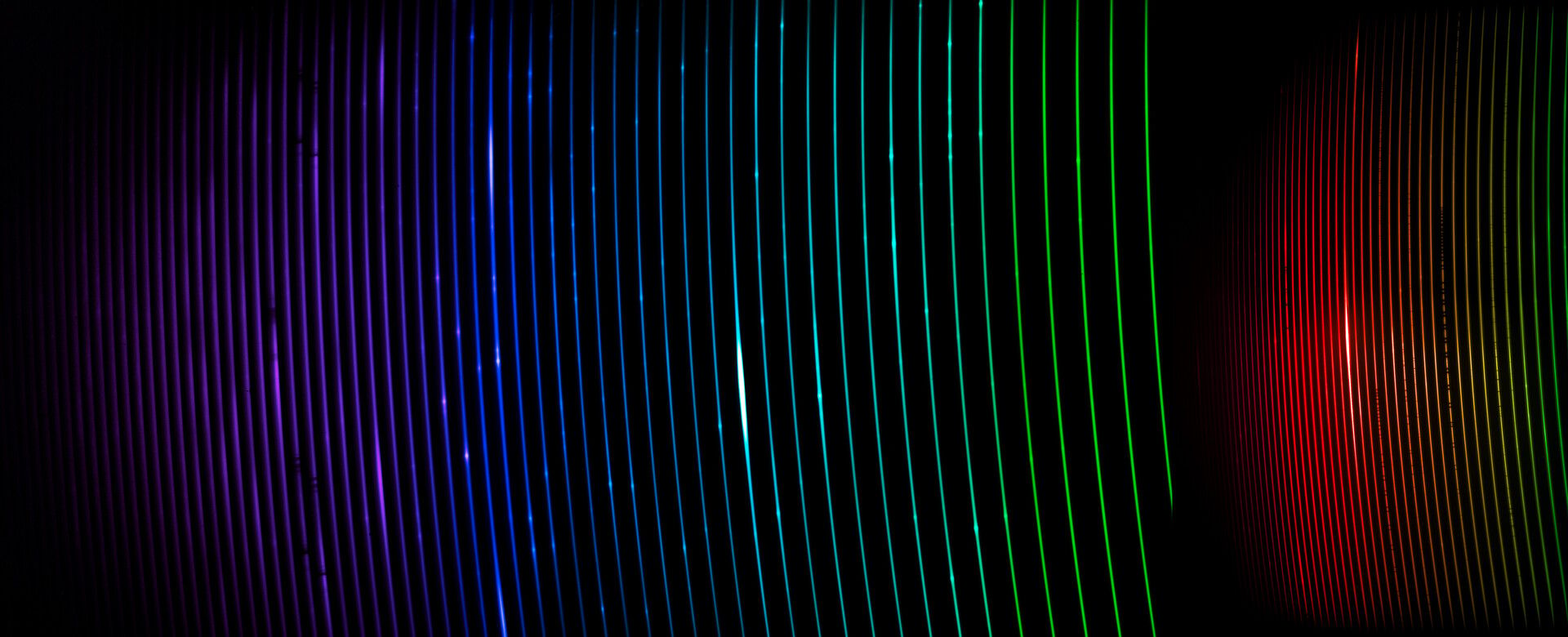
Astronomers using the SOAR Telescope in Chile have completed high-resolution spectroscopic observations of Eta Carinae, a massive binary system known for its violent outbursts and complex stellar winds. The team deployed the SOAR Telescope Echelle Spectrograph (STELES), a high‑resolution instrument installed on the 4.1‑meter SOAR Telescope, to capture detailed data on the system’s shock fronts and emission lines, offering fresh insight into the interactions between the two stars’ colliding winds. Eta Carinae, located roughly 7,500 light-years away in the Carina constellation, has long been a subject of study due to its 19th-century “Great Eruption” and its potential to end in a supernova. (Credit: CTIO/NOIRLab/SOAR/NSF/AURA)
STELES splits incoming starlight into two arms, one for blue light (300–550 nm) and one for red light (530–890 nm). The Echelle gratings fan out the light into a detailed “rainbow” spectrum, capturing nearly all visible photons in a single observation. The instrument provides extremely fine detail, allowing astronomers to detect subtle atomic and molecular features, Doppler shifts, and velocity structures in stellar winds, and improve modeling of high-energy astrophysical phenomena.
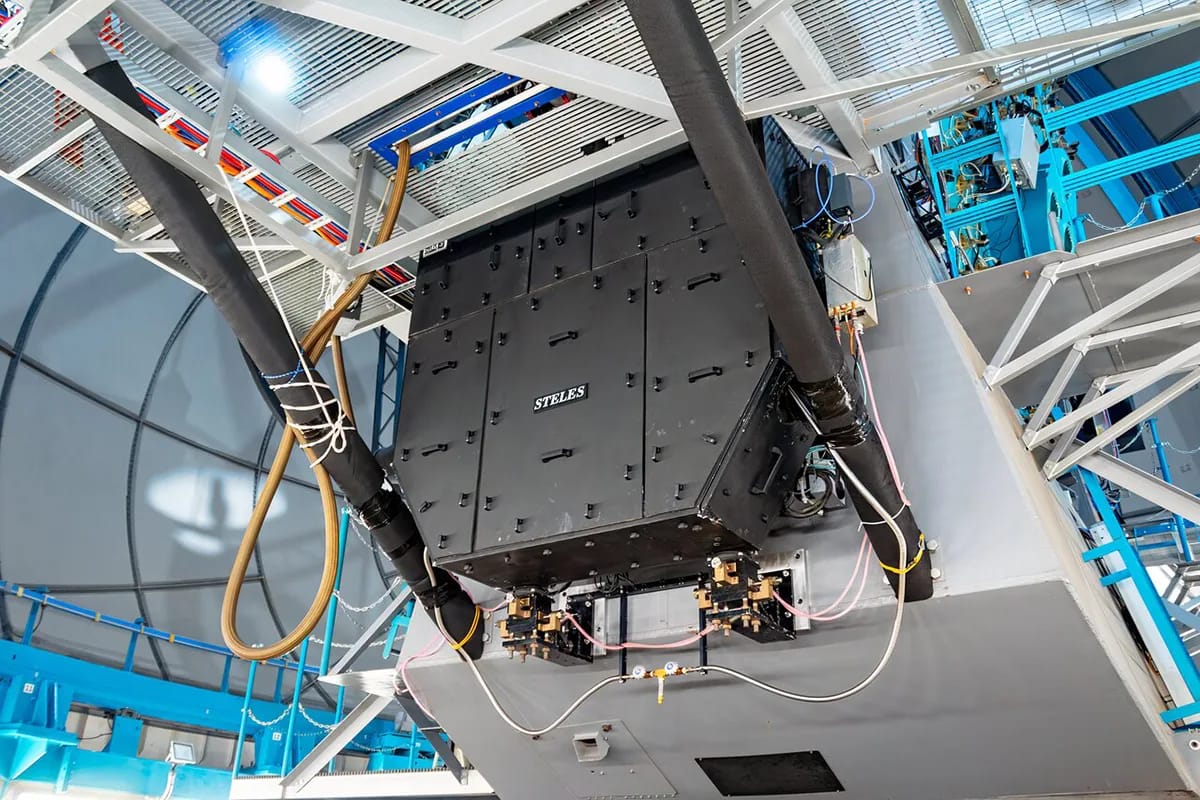
The STELES high-resolution spectrograph, installed on the 4.1-meter SOAR Telescope at Cerro Pachón, Chile. (Credit: CTIO/SOAR/NOIRLab/NSF/AURA/J. Fenske)
The full spectrum image shows hundreds of absorption and emission lines, that reveal the chemical composition of the gas surrounding the system, including heavy elements expelled during past eruptions. By measuring Doppler shifts, astronomers can track the velocities of material being ejected, the colliding winds of the two stars, and changes over time. Because Eta Carinae is unstable and may be approaching a supernova phase, this spectral data is crucial for modeling how massive stars evolve and die.
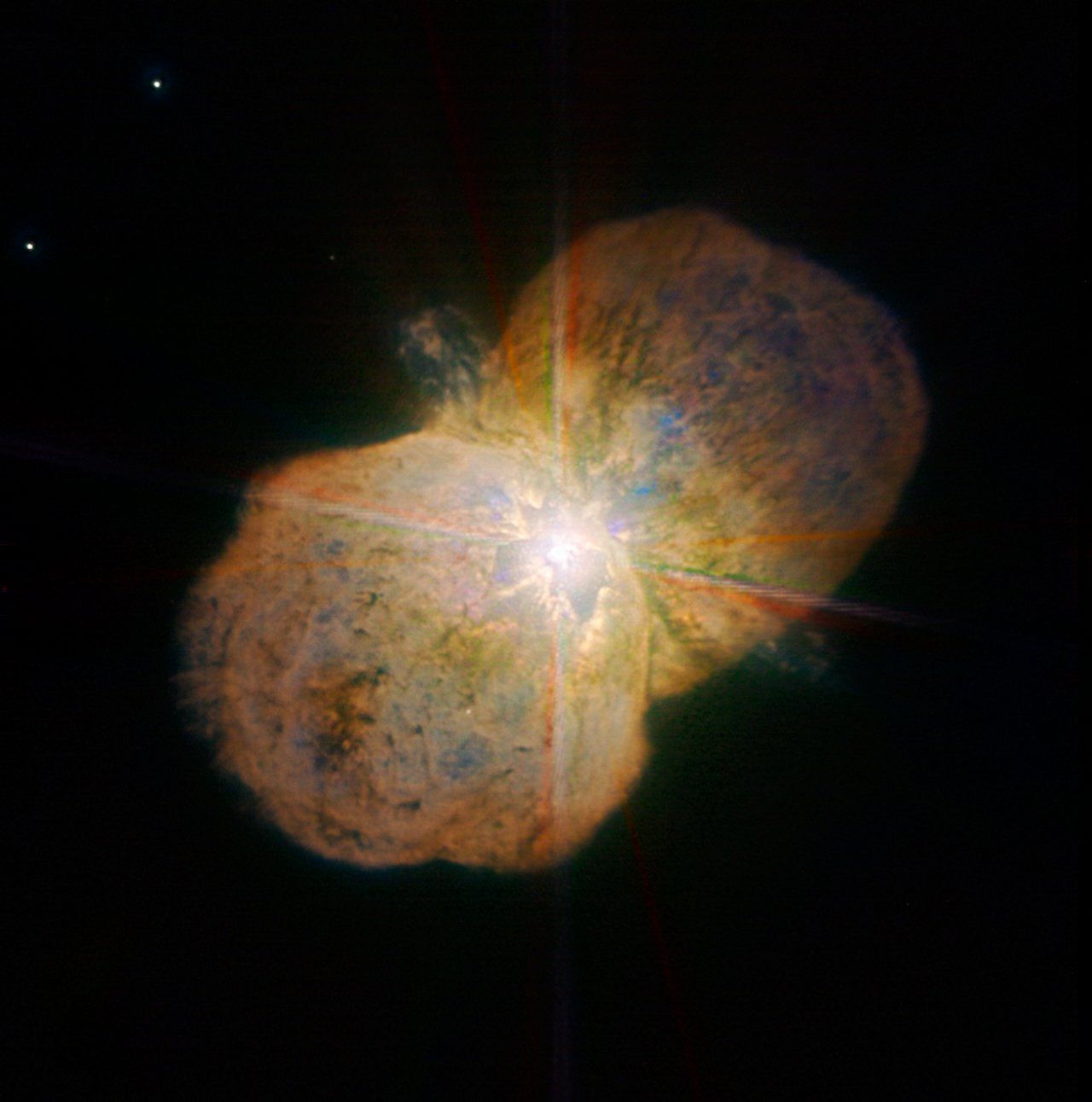
Near-infrared images of Eta Carinae from ESO’s Very Large Telescope reveal detailed bipolar structures and stellar jets. Captured by the Paranal Science team using NACO and processed by Yuri Beletsky and Hännes Heyer, the data spans broad and narrow bands probing iron and hydrogen emissions. (Credit: ESO)
The spectrograph’s performance marks a technical milestone for SOAR, which is operated by Arizona (U.S.)-based NOIRLab (National Optical-Infrared Astronomy Research Laboratory) and the Brazilian Ministry of Science. After nearly a decade of development and delays (including pandemic disruptions), it achieved “first light” in August 2025, with Eta Carinae chosen as its inaugural target. The data will inform broader efforts to understand massive star evolution and the mechanisms driving extreme stellar variability.
Cerro Tololo and the Atacama Desert : Petr Horálek, NOIRLab Audiovisual Ambassador.

In the Chilean Andes, two neighboring mountaintops host some of the world’s most advanced observatories. This long‑exposure image from Cerro Pachón, a site that also hosts the Vera C. Rubin Observatory, Gemini South, and the SOAR Telescope, captures the illuminated road linking Cerro Pachón to Cerro Tololo, its glow created by headlights of vehicles moving between the two sites. Cerro Tololo is home to roughly 40 instruments of the Cerro Tololo Inter‑American Observatory. Light from nearby towns, passing aircraft, and setting stars adds context, illustrating how these observatories operate within broader environmental and community landscapes of the Atacama Desert. (Credit: CTIO/NOIRLab/NSF/AURA/P. Horálek (Institute of Physics in Opava))
China’s Asteroid Probe Selfie with Earth and Capsule : Robotic Arm, Tianwen-2
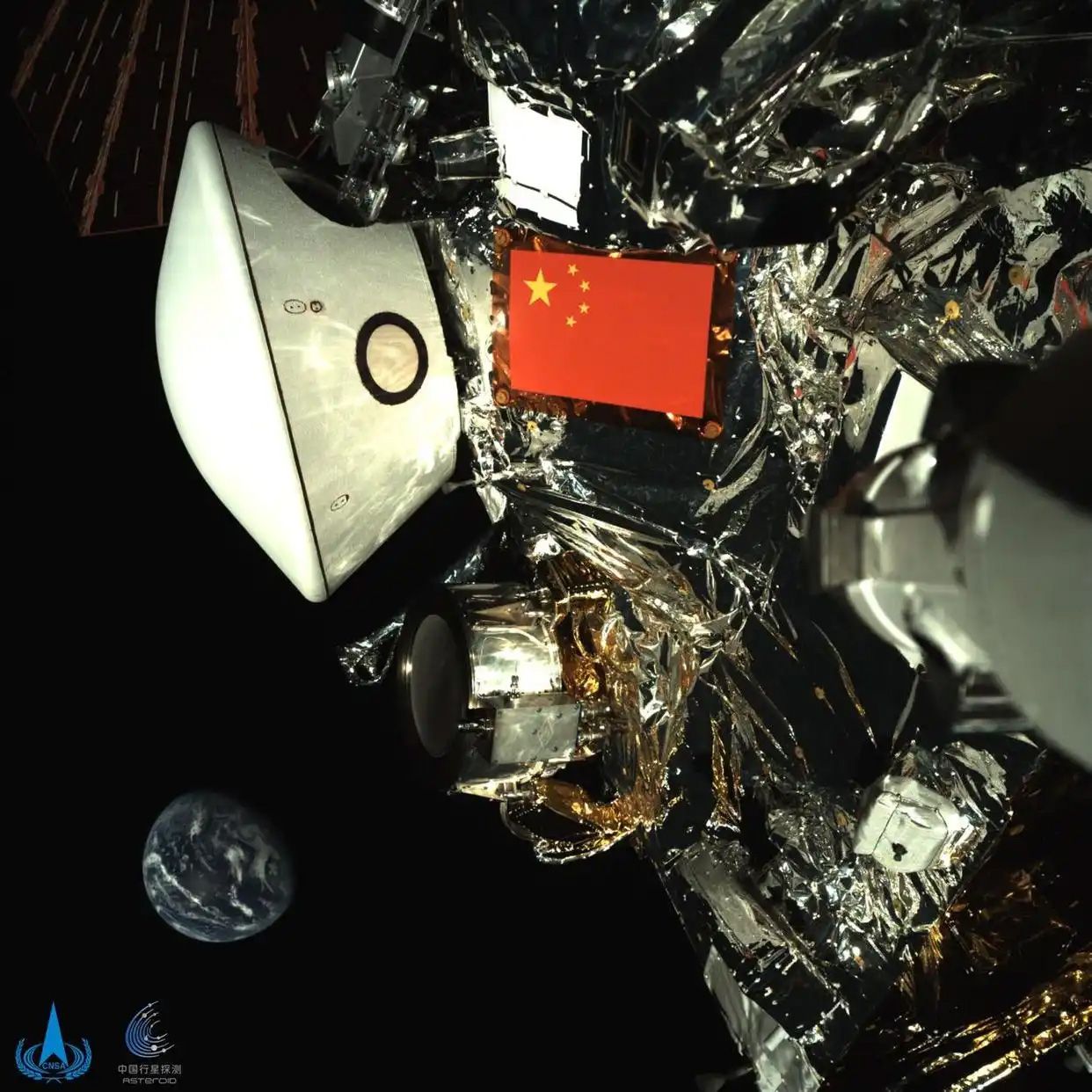
China’s Tianwen‑2 spacecraft has released a new image showing the probe, its return capsule, and the Chinese flag with Earth in the background, captured by a robotic arm camera during its journey. The China National Space Administration confirmed the probe is operating normally, about 43 million kilometers/26.5 million miles from Earth, after completing in‑orbit tests including deployment of sampling devices. Tianwen‑2 is en route to near‑Earth asteroid Kamoʻoalewa (classified as one of Earth’s seven quasi‑moons, with evidence suggesting it may be debris originating from the Moon), where it will attempt sample collection in 2026 for return in 2027. After releasing the return capsule with the sample, the spacecraft itself will continue on an extended journey to study 311P/PANSTARRS, a main‑belt comet known for its unusual multiple dust tails.
China conducts much of its space activity outside U.S. partnerships, as the 2011 Wolf Amendment bars NASA and other agencies from bilateral cooperation with Chinese entities. At the same time, China has worked with partners such as the UAE and ESA on the Tianwen‑1 Mars mission and has signed agreements with countries including Russia, Pakistan, South Africa, Venezuela, and the UAE to join its planned International Lunar Research Station (ILRS). (Credit: CNSA/Handout via Xinhua)
M87’s Black Hole Jet : James Webb Space Telescope
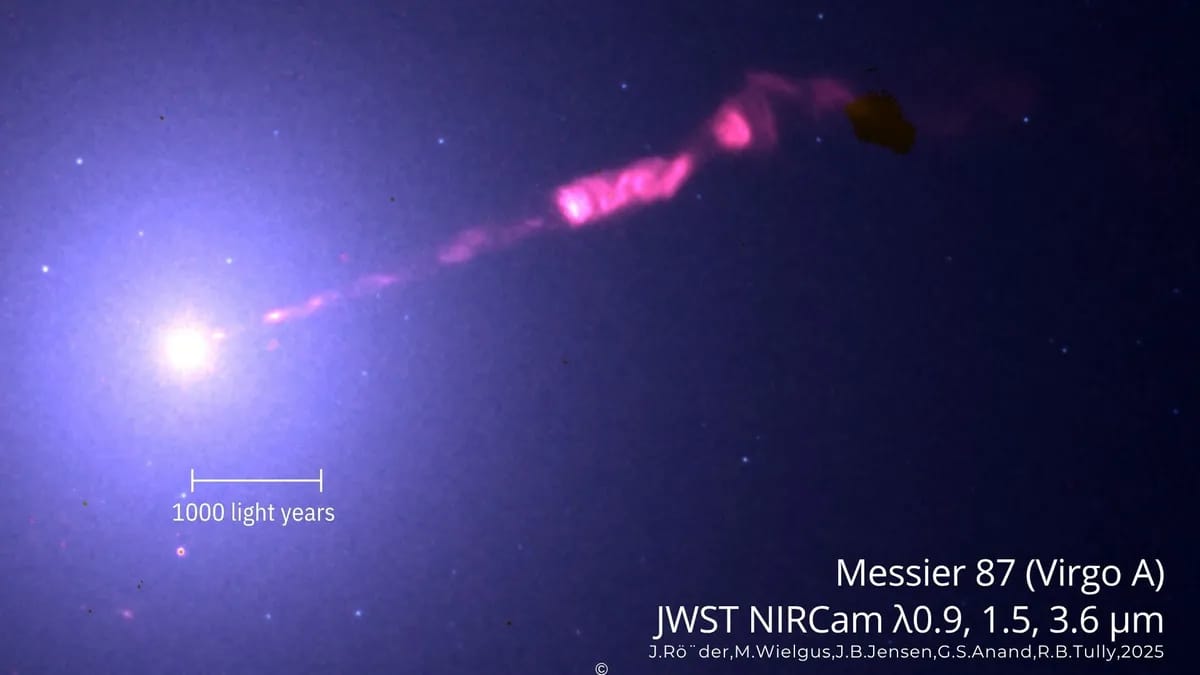
Astronomers using the James Webb Space Telescope have produced the sharpest infrared image to date of the jet emerging from the supermassive black hole at the center of the Messier 87/M87 galaxy. The data reveal new structural details, including a helical form, bright knots, and a faint counter‑jet previously difficult to detect. Researchers used Webb’s NIRCam across four infrared bands, subtracting background light to isolate the jet’s synchrotron emission. Located 55 million light‑years away, M87’s black hole, called M87* (pronounced “M87 star”) was first imaged in 2019. The new observations offer insight into particle acceleration and shock dynamics, advancing studies of how black holes influence galactic environments. (Credit: Jan Röder; Maciek Wielgus et al., 2025)
NGC 2775 Galaxy : Hubble Space Telescope
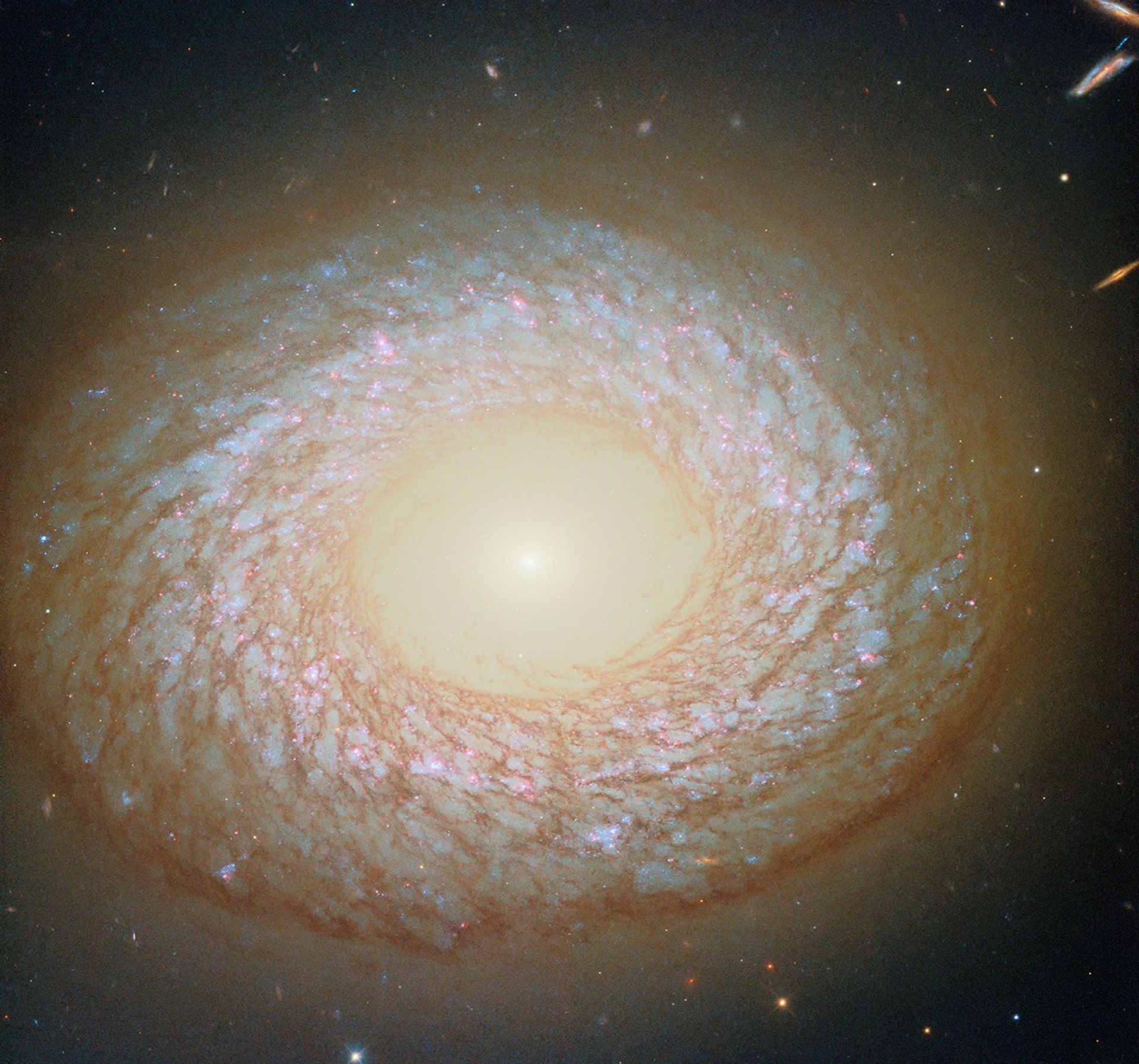
A new image from the NASA/ESA Hubble Space Telescope highlights NGC 2775, a galaxy in Cancer (The Crab) constellation that defies easy classification. Its smooth, gas-deficient core resembles an elliptical galaxy, while its outer ring displays patchy star clusters typical of spirals. 67 million light-years away, most astronomers label it a flocculent spiral, though some suggest it may be lenticular—a transitional type possibly shaped by mergers or gas depletion. A faint hydrogen tail, invisible in the image, stretches nearly 100,000 light-years, hinting at past interactions. The latest observations include red light from hydrogen clouds, helping researchers trace regions of recent star formation. (Credit: ESA/Hubble & NASA, F. Belfiore, J. Lee and the PHANGS-HST Team)

SCIENCE
James Webb Telescope Detects Methane Gas on Dwarf Planet Beyond Neptune
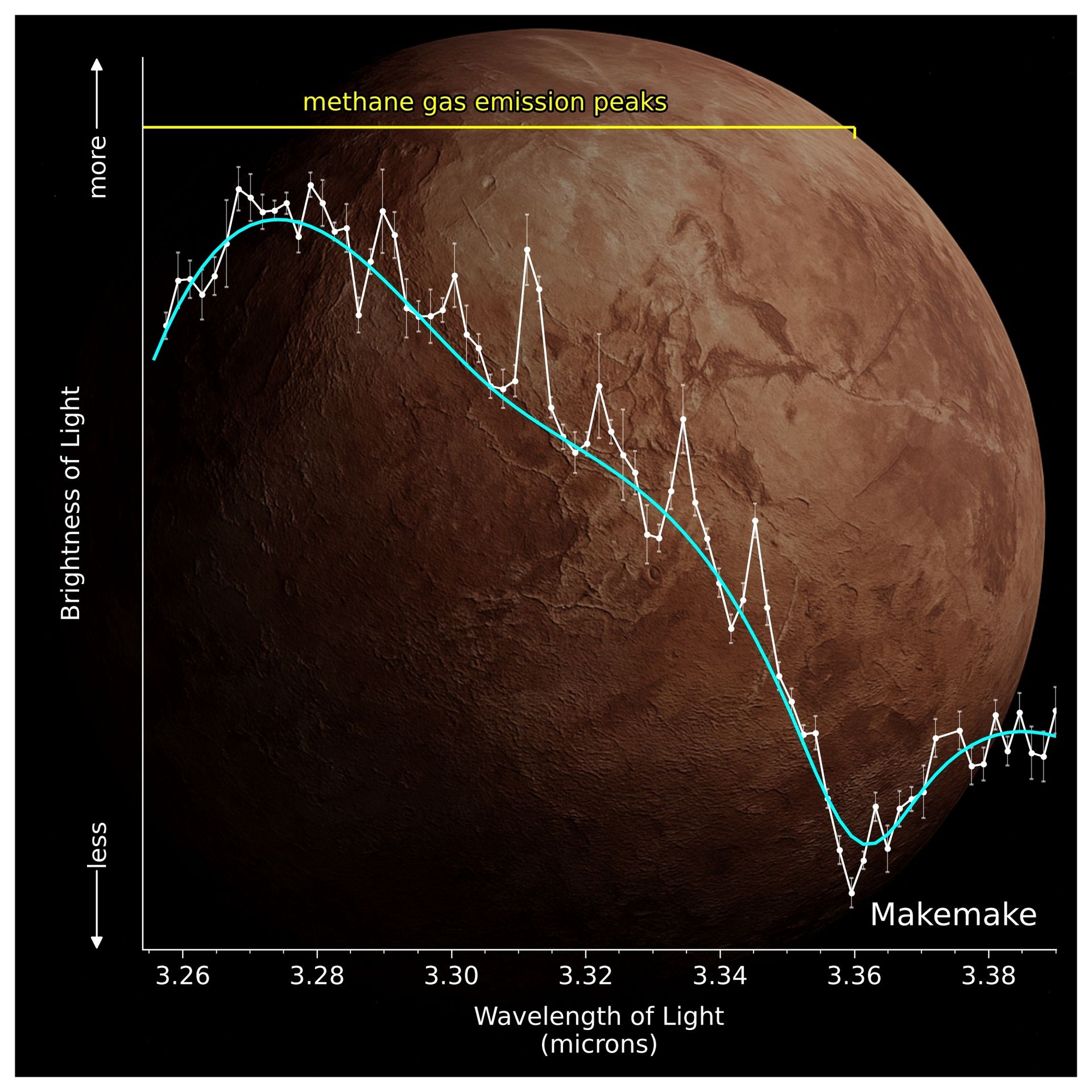
A Southwest Research Institute team used Webb observations (white) to detect methane gas above the dwarf planet Makemake. Emission peaks near 3.3 microns confirm methane in the gas phase, shown where the spectrum rises above the continuum model (cyan). An artistic rendering of Makemake’s surface appears in the background. (Credit: S. Protopapa, I. Wong/SwRI/STScI/NASA/ ESA/CSA)
28 September, 2025
A Southwest Research Institute (San Antonio, Texas)–led team has reported the first detection of gas on the distant dwarf planet Makemake, using NASA’s James Webb Space Telescope. The discovery marks Makemake as only the second trans‑Neptunian object, after Pluto, where gas has been confirmed. Webb’s near‑infrared data revealed methane in the gas phase above the surface, suggesting that Makemake is not a static remnant but an active body where volatile ices continue to evolve.
Researchers interpret the methane signal as solar‑excited fluorescence, which could indicate either a tenuous atmosphere in equilibrium with surface ices or more transient activity such as sublimation or cryovolcanic plumes. Models suggest any atmosphere would be extremely thin, with pressures a million times lower than Pluto’s. Alternatively, plume‑like outbursts could release methane at rates comparable to Saturn’s moon Enceladus.
James Webb Telescope Detects Carbon‑Rich Moon‑Forming Disk Around Distant Exoplanet
![This illustration depicts a disk of dust and gas surrounding the young exoplanet CT Cha b, located about 625 light‑years from Earth. Observations from NASA’s James Webb Space Telescope indicate the disk contains several carbon‑bearing molecules linked to potential moon formation, including diacetylene, hydrogen cyanide, propyne, acetylene, ethane, carbon dioxide, and benzene. The planet is shown at the lower right, with its host star and the broader circumstellar disk in the background. (Credit: NASA, ESA, CSA, STScI, Gabriele Cugno [University of Zürich, NCCR PlanetS], Sierra Grant [Carnegie Institution for Science], Joseph Olmsted [STScI], Leah Hustak [STScI])](https://media.beehiiv.com/cdn-cgi/image/fit=scale-down,format=auto,onerror=redirect,quality=80/uploads/asset/file/c2c4af18-1661-4e60-8a02-bd6b9e9af22d/image.png?t=1759664806)
This illustration depicts a disk of dust and gas surrounding the young exoplanet CT Cha b, located about 625 light‑years from Earth. Observations from NASA’s James Webb Space Telescope indicate the disk contains several carbon‑bearing molecules linked to potential moon formation, including diacetylene, hydrogen cyanide, propyne, acetylene, ethane, carbon dioxide, and benzene. The planet is shown at the lower right, with its host star and the broader circumstellar disk in the background. (Credit: NASA, ESA, CSA, STScI, Gabriele Cugno [University of Zürich, NCCR PlanetS], Sierra Grant [Carnegie Institution for Science], Joseph Olmsted [STScI], Leah Hustak [STScI])
29 September, 2025
NASA’s James Webb Space Telescope has provided the first direct chemical and physical measurements of a circumplanetary disk, a structure thought to be the birthplace of moons, around the young exoplanet CT Cha b, located 625 light‑years away. The planet orbits a two‑million‑year‑old star but is separated from its stellar accretion disk by 46 billion miles, confirming the disk is bound to the planet itself. Webb’s mid‑infrared spectrograph detected seven carbon‑bearing molecules, including acetylene, benzene, and hydrogen cyanide, suggesting a carbon‑rich environment distinct from the water‑dominated chemistry of the host star’s disk.
Researchers note that such disks are analogues to the one that likely formed Jupiter’s Galilean moons, offering a rare opportunity to observe processes that shaped our own solar system. While no moons have been detected, the findings highlight the diversity and rapid evolution of planetary systems. Future Webb surveys aim to determine how common these moon‑forming environments may be. The results were published in The Astrophysical Journal Letters.
Far Side Lunar Samples Returned by Chang’e‑6 Offer Clues to Moon’s Geological Divide
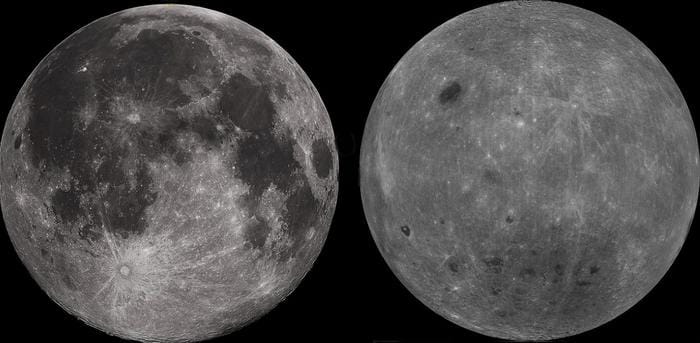
Images of the near (left) and far side of the moon from NASA's Clementine mission. (Credit: NASA)
30 September, 2025
China’s Chang’e‑6 mission has returned the first samples from the far side of the Moon, offering new insights into one of lunar science’s enduring puzzles: why the near and far sides are so different. Analysis of fragments collected from the South Pole–Aitken basin indicates the rocks are about 2.8 billion years old and crystallized at roughly 1,100°C/2012°F— around 100°C/212°F cooler than comparable samples from the near side gathered during Apollo. The findings, published in Nature Geoscience, suggest the Moon’s far‑side mantle was cooler and less volcanically active.
Researchers from University College London and Peking University, attribute the thermal divide to an uneven distribution of heat‑producing elements such as uranium, thorium, and potassium, which appear concentrated on the near side. How this imbalance arose remains debated: possibilities include a colossal impact, the merger of two proto‑moons, or Earth’s gravitational influence. The results imply that the Moon’s “two faces” extend deep into its interior, shaping its geological evolution over billions of years.
Wind-Driven Tumbleweed Rover Prototypes Tested for Low‑Cost Mars Exploration
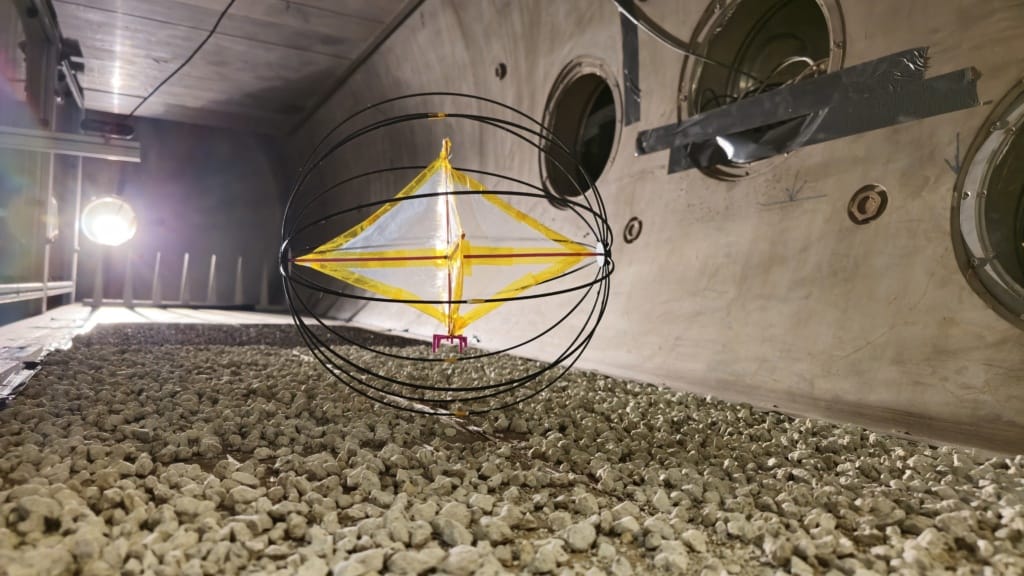
Team Tumbleweed’s scaled prototype rover negotiating a rocky surface in the wind tunnel at Aarhus. (Credit: Team Tumbleweed)
30 September, 2025
Researchers are advancing a novel concept for Mars exploration: spherical “tumbleweed” rovers propelled by the planet’s winds. Recent tests, presented at the Europlanet Science Congress–DPS 2025 meeting, combined wind‑tunnel experiments in Denmark with field trials in the Netherlands. Scaled prototypes, ranging from 30 to 50 centimeters, demonstrated that wind speeds of 9–10 meters per second could move the rovers across sand, pebbles, and rocky terrain under Mars‑like pressures. A larger 2.7‑meter prototype carried off‑the‑shelf sensors, successfully collecting environmental data while tumbling over natural ground.

Field tests with the Tumbleweed Science Testbed in a quarry in Maastricht in April 2025. (Credit: Team Tumbleweed)
The rovers, envisioned at five meters in diameter, could travel hundreds of kilometers over a few months, potentially dispersing in swarms to map atmospheric and surface processes simultaneously. At mission end, they could collapse into stationary monitoring stations. While the approach promises low‑cost, wide‑area coverage, uncertainties remain about the consistency of Martian winds and the durability of such lightweight platforms. No space agency has yet adopted the design for flight.
Is China’s Tianwen‑3 Positioned To Bring Perseverance’s Potential Biosignature Samples Back To Earth?
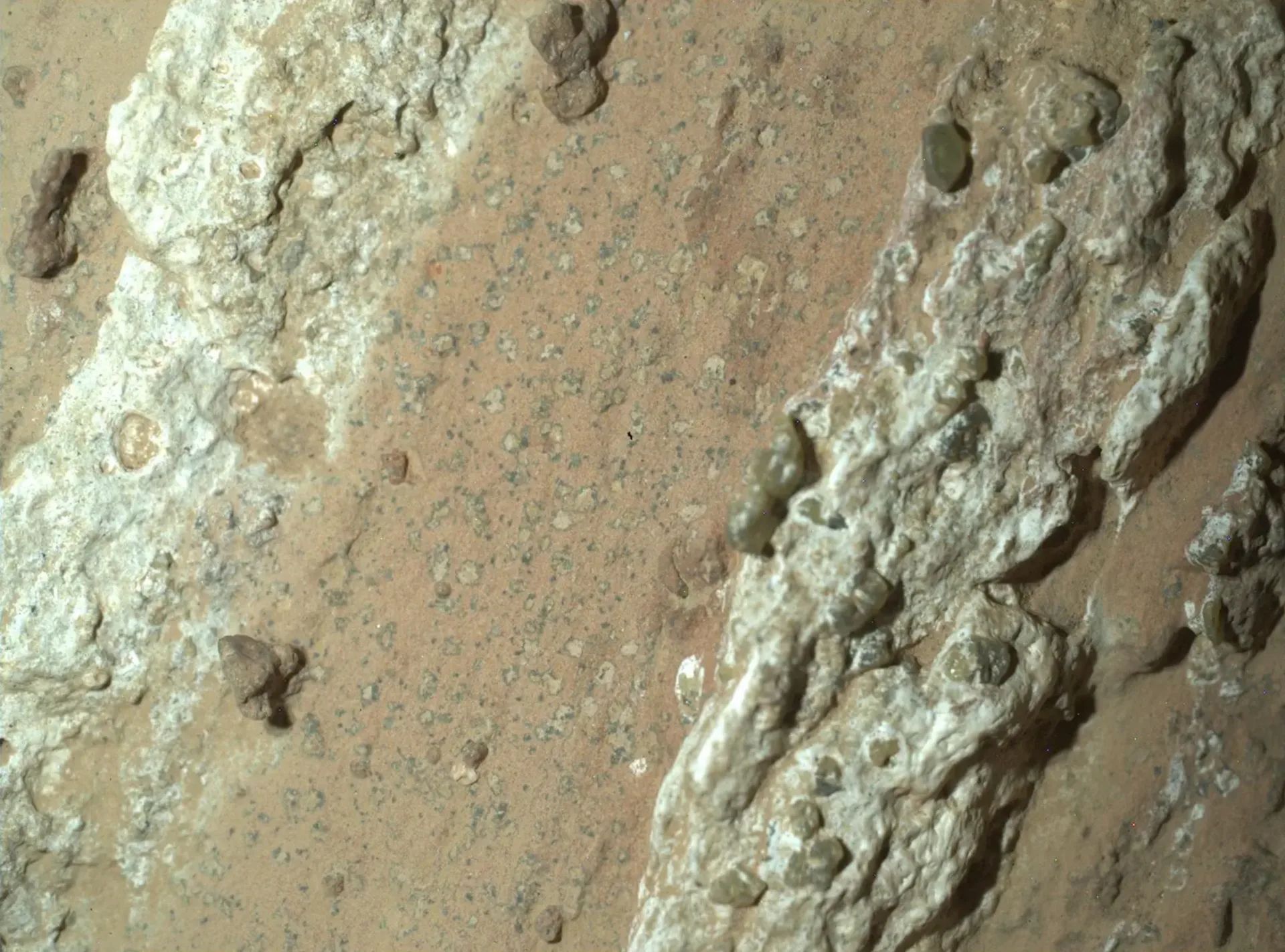
Leopard Spot Patterns on Cheyava Falls Rock: Perseverance discovered distinct mineral patterns resembling leopard spots on the reddish Cheyava Falls rock in Jezero Crater in July 2024, possibly linked to ancient chemical reactions, billion sof years ago, that could have supported microbial life. However, scientists are considering other explanations as well. (Credit: NASA/JPL-Caltech/MSSS)
01 October, 2025
NASA’s Perseverance rover has uncovered one of the most compelling Martian findings to date: a rock in Jezero Crater, nicknamed Cheyava Falls, marked by unusual “leopard spots” rich in organic carbon, iron, phosphorus, and sulfur. Detailed analysis revealed minerals such as vivianite and greigite, which on Earth often form through redox reactions central to microbial metabolism. These reactions, which involve the transfer of electrons, are fundamental to life’s energy systems, from photosynthesis to respiration. Their presence on Mars raises the possibility that similar processes once operated there. Yet scientists caution that abiotic chemistry could also explain the signatures, underscoring the difficulty of distinguishing true biosignatures from “false positives.”
The discovery has been described as “arguably the best evidence so far” for potential microbial activity on early Mars, surpassing earlier controversies such as the debated microfossils in meteorite ALH84001. Unlike past claims, Perseverance has physically cached a core sample, “Sapphire Canyon,” for eventual return to Earth. Laboratory isotopic studies could determine whether the minerals formed biologically or through non‑living processes. However, NASA’s Mars Sample Return (MSR) program, intended to retrieve these tubes, faces severe budgetary and technical challenges, with cancellation now a real possibility.
This uncertainty opens the door for China’s Tianwen‑3 mission, scheduled to launch in 2028 and return samples by 2031. While Jezero Crater itself is unlikely to be targeted due to landing constraints, Tianwen‑3 could aim for similar clay‑rich regions that preserve traces of ancient water activity. If successful, China may deliver the first Martian samples to Earth, potentially outpacing NASA despite Perseverance’s head start. The situation highlights both the promise and fragility of astrobiology research. Perseverance’s findings deepen the case for Mars as a once‑habitable world, but definitive answers hinge on sample return. Whether through NASA or China, the race to bring Martian material home may determine how and by whom, the question of life on Mars is finally addressed.

GOVERNANCE
European and Asia‑Pacific Space Agencies Expand Cooperation Through New Agreements at International Astronautical Congress
ESA, KASA, JAXA, UK, and Australia Strengthen Space Partnerships With New Missions and Collaboration Frameworks
01 October, 2025
At the International Astronautical Congress (IAC) in Sydney, a series of new agreements shed light on how space agencies are broadening international partnerships to address both scientific and strategic goals.
The European Space Agency (ESA) signed a memorandum of understanding with the Korea AeroSpace Administration (KASA), created in 2024, to cooperate on peaceful uses of space, beginning with space weather monitoring and reciprocal access to ground stations. The deal includes reciprocal access to ground stations, beginning with Korea’s Deep Space Antenna in Yeoju joining ESA’s Estrack network, improving resilience for tracking and communications. The agencies also intend to collaborate on space weather, potentially linking ESA’s Vigil mission at L5 with a planned Korean solar probe at L4. Broader areas of cooperation could extend to navigation, exploration, and human spaceflight.
ESA also advanced ties with Japan, confirming that its Ramses spacecraft will launch alongside JAXA’s Destiny+ mission on an H3 rocket. The rideshare will allow Ramses to study asteroid Apophis ahead of its 2029 Earth flyby, while Destiny+ continues its primary mission to 3200 Phaethon. The arrangement reflects ESA’s strategy of diversifying partnerships amid uncertainty in U.S. budgets and shifting geopolitical dynamics.
Meanwhile, the UK and Australia renewed their “Space Bridge” framework, first established in 2021, to deepen collaboration across government, industry, and academia. The latest round of projects includes joint work on orbital debris tracking, spacecraft fuel dynamics, and autonomous rendezvous technologies, alongside continued support for water quality monitoring via satellites. Three new collaborations with Australian partners were confirmed yesterday as part of the UK Space Agency’s latest International Bilateral Fund (IBF) awards.
NASA Furloughs 15,000 Employees as U.S. Government Shutdown Halts Most Operations
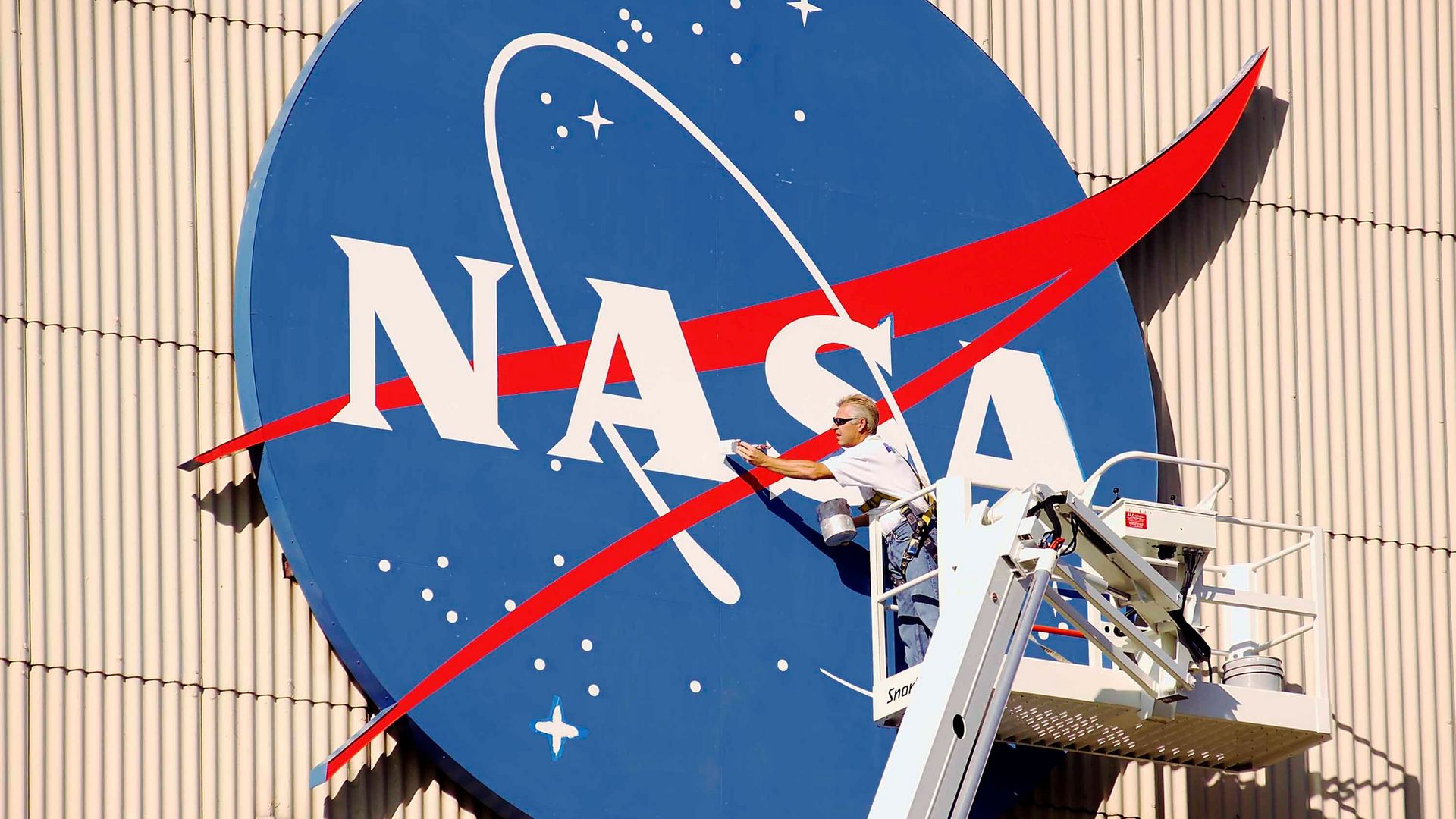
Credit: NASA
01 October, 2025
The U.S. government shutdown has forced NASA to furlough more than 15,000 of its 18,000 civil servants, halting most day‑to‑day operations. According to the agency’s updated contingency plan, only about 3,100 employees are classified as “excepted,” tasked with safeguarding astronaut safety, critical hardware, and assets deemed essential to life and property. This includes continued operation of the International Space Station, Earth‑observing satellites, and the Artemis program, which has been granted broader exemptions to keep preparations for Artemis 2 on track ahead of its planned 2026 launch.
Research projects, technology development, public outreach, and most science missions have been suspended, while contractors face uneven outcomes depending on existing funding and access to NASA oversight. The plan also restricts the use of carryover funds to presidential priorities, raising questions about how resources may be redirected during the lapse. While civil servants are guaranteed back pay, the shutdown compounds uncertainty in an already constrained budget environment, with potential ripple effects across future missions
In a First, NASA and China Coordinate to Prevent Satellite Collision as LEO Traffic Grows
01 October, 2025
For the first time, NASA and the China National Space Administration (CNSA) directly coordinated to prevent a potential satellite collision, marking a tentative step toward broader space traffic management. The exchange, an email from CNSA suggesting it would maneuver while NASA held position, was described by NASA’s space sustainability director Alvin Drew as unprecedented. Historically, communication between the two agencies has been minimal, constrained by political restrictions such as the U.S. Wolf Amendment, which bars NASA and other agencies from bilateral cooperation with Chinese entities.
We would like to recommend you hold still and we'll do the maneuver.
The incident comes as low Earth orbit grows increasingly congested with megaconstellations. China is deploying its Guowang and Qianfan broadband systems, projected to total nearly 30,000 satellites, while SpaceX’s Starlink and Amazon’s Kuiper plan tens of thousands more. Commercial operators, including OneWeb and SpaceX, have also reported receiving coordination messages from Chinese constellations, suggesting a policy shift in Beijing toward limited engagement. Experts caution that ad hoc exchanges are insufficient, stressing the need for real‑time, multilateral frameworks to manage orbital safety.

MILITARY
US Department of War Invests in Boosting Solid Rocket Motor Manufacturing Capacity
26 September, 2025
The U.S. Department of War (rebranded from Department of Defense, following an executive order signed by President Donald Trump in September 2025) has announced new investments aimed at strengthening the nation’s fragile solid rocket motor (SRM) supply chain, a sector under strain from rising demand for missiles, hypersonic systems, and launch vehicles. On September 26, the Pentagon awarded a four‑year, $191 million contract to X‑Bow Launch Systems of New Mexico to develop advanced manufacturing techniques for SRM propellants, including additive processes intended to diversify a market long dominated by a few large suppliers.
In parallel, two Defense Production Act Title III awards totaling $33.5 million were issued to Americarb and General Dynamics Ordnance and Tactical Systems. Americarb, awarded $12.6 million, will develop carbonized rayon phenolic, a critical ablative material for rocket nozzles, while General Dynamics, awarded $20.9 million, will expand composite nozzle production capacity. Officials emphasized that these steps are part of a broader effort to modernize facilities, reduce lead times, and ensure resiliency across the munitions industrial base, which has been identified as a strategic vulnerability.
US Defense Space Programs Award Contracts to Advance Reconfigurable Spacecraft, Shielding Technologies, and Launch Services
ExLabs, Cosmic Shielding, AeroVironment, SpaceX, and ULA Featured in New National Security Space Contracts
The U.S. Space Force is broadening its investment portfolio across spacecraft platforms, shielding technologies, and launch services, underscoring both the opportunities and vulnerabilities in the national security space enterprise. In late September and early October, a series of contract announcements highlighted how the service is leaning on both established launch providers and emerging startups to diversify capabilities.
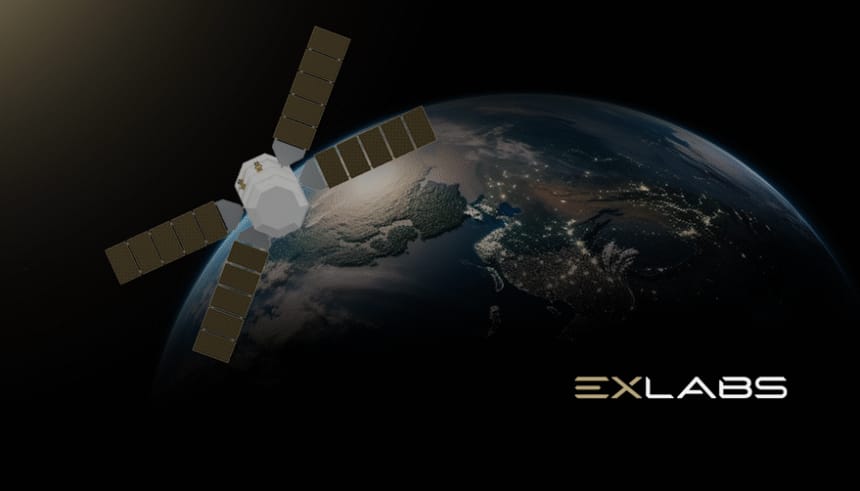
Credit: ExLabs
01 October, 2025
One award, valued at $1.9 million, went to ExLabs, a California startup developing SERVSAM, a reconfigurable spacecraft platform designed for multiple orbital regimes. The project, funded through the Space Systems Command’s Small Business Innovation Research program, builds on earlier contracts supporting ExLabs’ modular vehicle architecture. The company aims for operational demonstrations by 2027, in response to Space Force’s interest in adaptable, dual‑use platforms that can scale with mission tempo.
01 October, 2025
Radiation and electromagnetic resilience also featured prominently. Cosmic Shielding Corporation secured a $4 million Tactical Funding Increase (TACFI) contract to accelerate deployment of its MSP/Plasteel material, which has shown promise in protecting advanced commercial electronics, such as AI processors, from radiation damage. By reducing qualification timelines from years to hours, the technology could enable higher‑performance hardware in orbit.
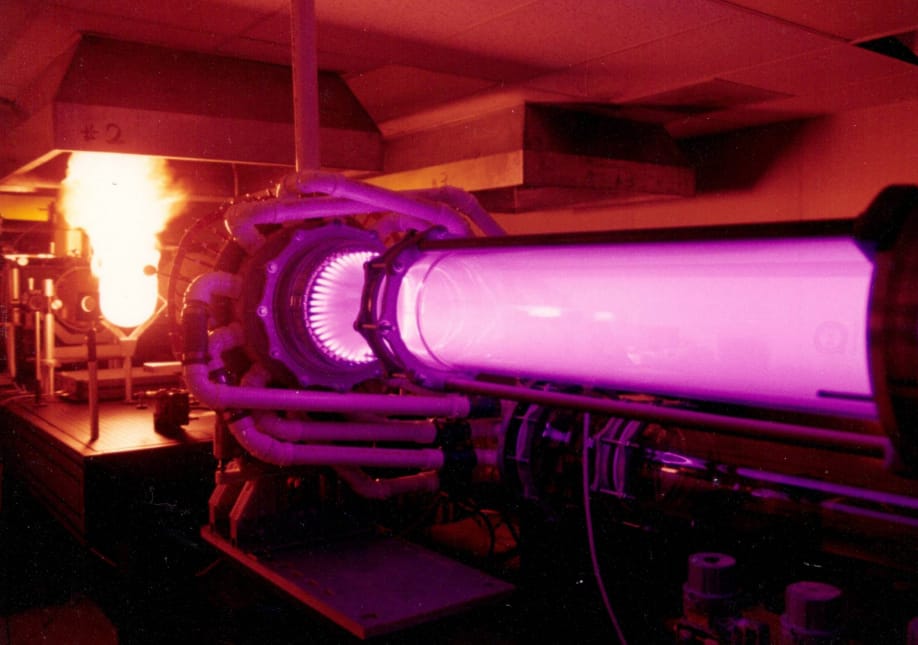
A high‑power laser used in the High‑Performance Electromagnetic Spectrum Survivable Materials Advancement (HELMSSMAN) program at the Air Force Research Laboratory, Wright‑Patterson Air Force Base, Ohio. (Credit: AeroVironment)
02 October, 2025
In parallel, AeroVironment was awarded a $499 million, decade‑long contract (10-year single-award, indefinite-delivery/indefinite-quantity (IDIQ)) under the Air Force Research Laboratory’s HELMSSMAN program to develop survivable materials against electromagnetic threats. The effort will explore protective systems for personnel and platforms, extending to sensors and vehicles vulnerable to spectrum disruption.
AV has received two initial task orders worth $246 million to advance electromagnetic spectrum (EMS) protection technologies. The first, valued at $98 million, focuses on developing vision protection materials that safeguard personnel without compromising mission performance.
The second, at $148 million, supports research into how EMS sources affect U.S. materials, components, and systems, with the goal of creating mitigation options to preserve operational effectiveness. Both efforts include building test infrastructure, modeling methods, and validation processes to accelerate deployment. Together, the task orders cover research, development, testing, prototyping, and demonstration of technologies aimed at enhancing EMS resilience and vision protection, with work beginning this month.
03 October, 2025
At the launch infrastructure level, the Space Force awarded more than $1 billion to SpaceX and United Launch Alliance for seven missions beginning in fiscal 2027. These contracts fall under the National Security Space Launch Phase 3 program, which will eventually distribute 54 missions among SpaceX, ULA, and Blue Origin.
Five of seven national security launches were allocated to SpaceX ($714 million), extending the company’s lead role in the Pentagon’s primary launch program. United Launch Alliance ($428 million) will conduct the other two missions, while Blue Origin, whose New Glenn vehicle has not yet been certified, will not receive an assignment until at least fiscal year 2027. The awards reaffirm reliance on commercial launch providers while signaling the scale of upcoming classified and communications payloads.
The initiatives illustrate a layered approach: investing in flexible spacecraft, hardening electronics, safeguarding against electromagnetic risks, and securing launch capacity to meet expanding defense requirements.
Germany Commits €35 Billion/$41.1 Billion to Space Defense Projects Through 2030

German Defense Minister Boris Pistorius delivers remarks at the Federation of German Industries Space Congress in Berlin on September 25. (Credit: BDI/Christian Kruppa)
01 October, 2025
Germany has announced a €35 billion/$41.1 billion commitment to space‑related defense projects by 2030, signaling a major expansion of its military role in orbit. Defense Minister Boris Pistorius framed the move as a response to the growing likelihood that future conflicts will extend into space, emphasizing the need for deterrence and resilience. According to the Bundeswehr, the investment will target five priorities: protecting data networks from disruption, enhancing space situational awareness, building redundancy through multiple satellite constellations, securing diverse launch options, and establishing a dedicated military satellite operations center.
The funding is expected to benefit both established and emerging players. Heavy‑lift needs will continue to rely on Ariane 6, but German small‑launch providers such as Rocket Factory Augsburg, Isar Aerospace, and HyImpulse could see expanded support, alongside the German Offshore Spaceport Alliance. Satellite manufacturer OHB, already a supplier of reconnaissance constellations, is positioned to gain from new acquisitions. Officials also stressed European cooperation, framing the initiative as part of a broader continental security effort.
Canada Invests $13.2 Million in Dual‑Use Space Technologies to Strengthen Sovereignty and Resilience

Credit: NASA
01 October, 2025
Canada is stepping up efforts to strengthen its space sector through a mix of domestic investment and international engagement. At the International Astronautical Congress, the Canadian Space Agency announced $13.2 million in funding for 19 projects led by 17 companies and research groups. The awards, made under the Space Technology Development Program, target dual‑use technologies spanning satellite communications, artificial intelligence, lunar mobility, and propulsion. Officials emphasized that such projects are intended to bolster sovereignty, resilience, and competitiveness while equipping Canada with capabilities relevant to both civilian and defense needs.
Earlier, the Trade Commissioner Service launched a Canadian Technology Accelerator initiative focused on dual‑use space ventures in Silicon Valley and Colorado. The program provides selected firms with access to U.S. innovation clusters, investors, defense contractors, and federal agencies, alongside exposure at the SmallSat Symposium and Space Symposium. A coordinated strategy is emerging with these developments: nurturing early‑stage innovation at home while positioning Canadian companies within global supply chains and security‑driven markets.

COMMERCIAL
Blue Origin Plans Higher Launch Cadence With New Shepard Fleet Expansion, Eyes Global Spaceports
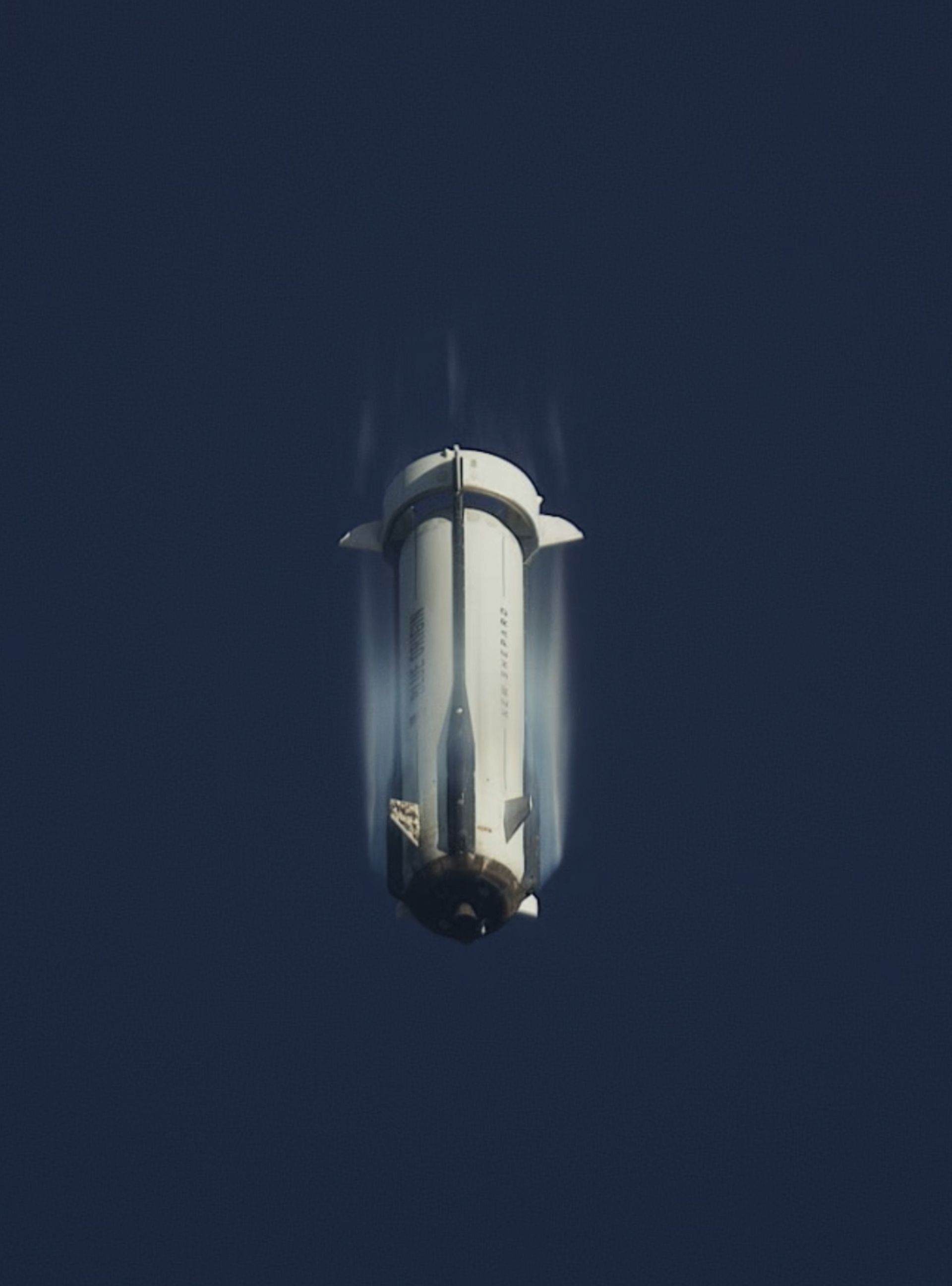
The New Shepard booster descends to the landing pad during Mission NS-35 on September 18, 2025. (Credit: Blue Origin)
28 September, 2025
Blue Origin is preparing a significant expansion of its suborbital operations as competition in the commercial launch sector intensifies. The company announced plans to retire its two current New Shepard vehicles by 2027 and replace them with three upgraded systems, beginning service in 2026. The new fleet will feature redesigned propulsion modules powered by next‑generation BE‑3 engines, aimed at reducing maintenance costs and enabling weekly flights. Demand for research and passenger missions continues to exceed supply, keeping ticket prices steady for now, though executives expect market pressures to lower costs later in the decade.
Alongside the fleet upgrade, Blue Origin is evaluating new spaceport options to broaden access, including potential sites outside the United States. The company currently operates from its West Texas facility, but additional launch locations are seen as critical to sustaining higher cadence and diversifying markets. The move comes as rivals SpaceX and Rocket Lab maintain high launch cadences in orbital markets, while Virgin Galactic develops its Delta‑class spaceplanes for suborbital tourism. Blue Origin has been making efforts to regain momentum after a pause in New Shepard flights following a 2022 anomaly. The company has also indicated longer‑term ambitions in orbital launch and lunar transport, though timelines remain unclear and market positioning continues to evolve.
China’s Galactic Energy Completes Pallas‑1 Static Fire and Secures $336 Million Funding
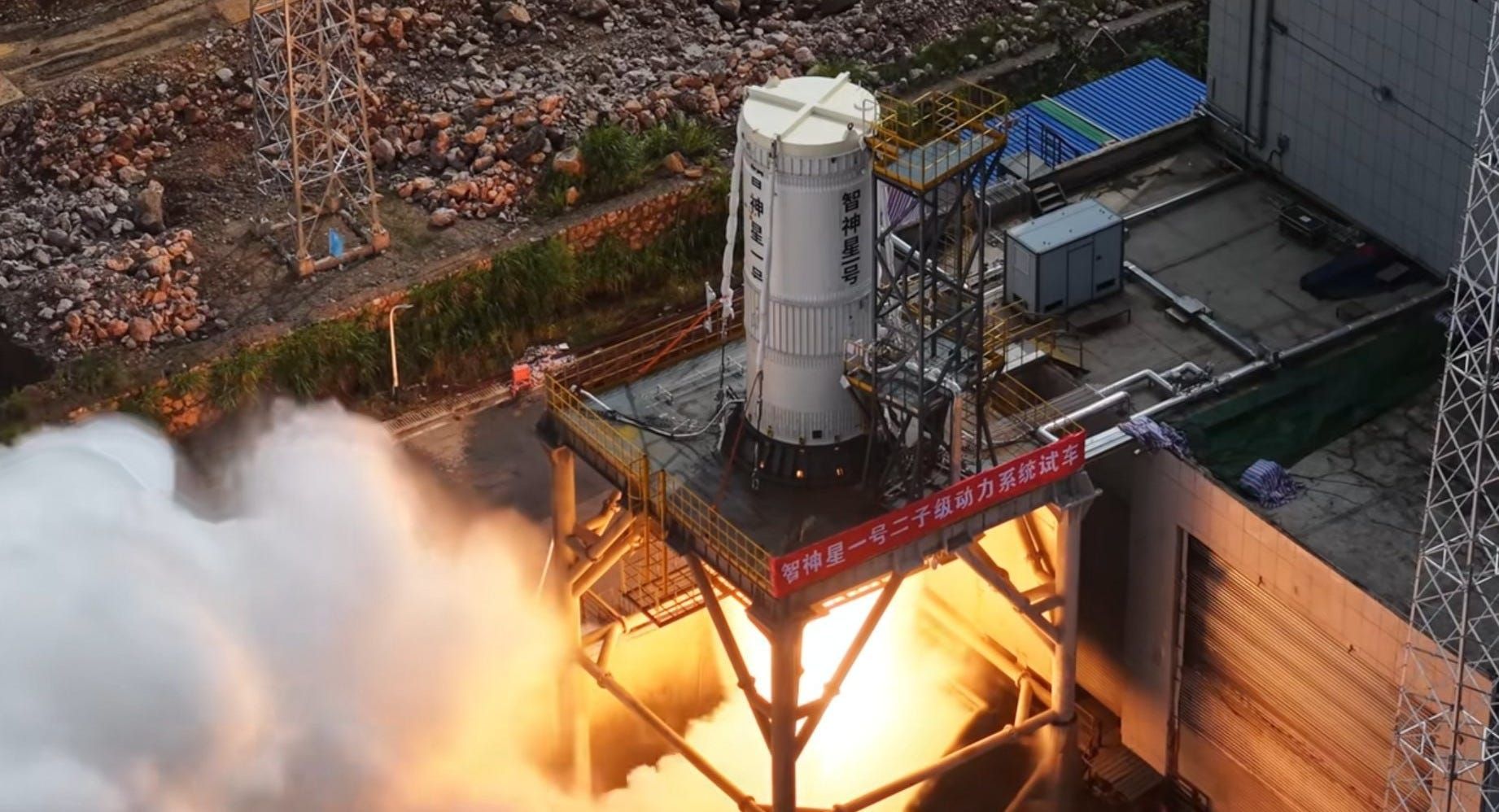
Pallas-1 second-stage conducting its static fire on a modified test stand in September 2025. (Credit: Galactic Energy via China-in-Space)
28 September, 2025
Chinese launch provider Galactic Energy has advanced its reusable rocket program while securing major new investment. On September 28, the company conducted a nearly four‑minute static fire of the Pallas‑1 second stage at its Anhui test facility. The kerosene‑liquid oxygen CQ‑50 engine produced about 50 tons of thrust, with startup and shutdown, while monitoring and control systems were verified. The stage was bolted and restrained in place under oversight from national regulators, marking one of the final milestones before Pallas‑1’s planned debut from Jiuquan, expected later this year.
Pallas‑1 is part of China’s first generation of reusable liquid-fueled orbital rockets. Designed as a two‑stage vehicle with an optional Eros upper stage, it uses seven CQ‑50 engines on the first stage. With a liftoff mass of about 283 tons, it can carry up to 7 tons to low Earth orbit, targeting large satellite and constellation deployments while enabling vertical recovery and reuse of its first stage.
Hours after the test, Galactic Energy announced completion of a 2.4 billion yuan ($336 million) Series D funding round, backed largely by state‑linked investors. The capital will support Pallas‑1 development, production scaling, and refinement of reuse technologies, while consolidating the firm’s Ceres series in China’s launch market. Meanwhile, the four‑stage Ceres‑2 has completed assembly in Haiyang and is preparing for a maiden sea‑launch carrying six satellites.
NASA Awards Solstar Contract to Develop Lunar Wi‑Fi System

Solstar Space is designing Wi‑Fi access points intended to support NASA spacecraft, scientific instruments, rovers, landers, and Artemis mission crews. (Credit: Solstar Space)
29 September, 2025
New Mexico (U.S.)-based in-space connectivity provider, Solstar Space has been awarded a NASA Phase I Small Business Innovation Research (SBIR) contract worth $150,000 to develop a Lunar Wi‑Fi Access Point (LWIFI‑AP), aimed at supporting Artemis and Commercial Lunar Payload Services (CLPS) missions. The system is intended to provide multi‑band, multi‑protocol connectivity across lunar assets, including landers, rovers, habitats, and cislunar spacecraft such as the Lunar Gateway. NASA has identified communications infrastructure as a critical gap for sustained lunar operations, with requirements spanning the Human Landing System, Lunar Terrain Vehicle, and Gateway modules.
The LWIFI‑AP will be engineered for radiation tolerance, thermal survivability, and low size, weight, and power (SWaP) demands, enabling real‑time data transfer, navigation, and scientific collaboration. While terrestrial Wi‑Fi is ubiquitous, no commercial solution yet meets the environmental hardening needed for lunar conditions.
Firefly Aerospace Alpha Rocket Explodes During Preflight Static Test in Texas
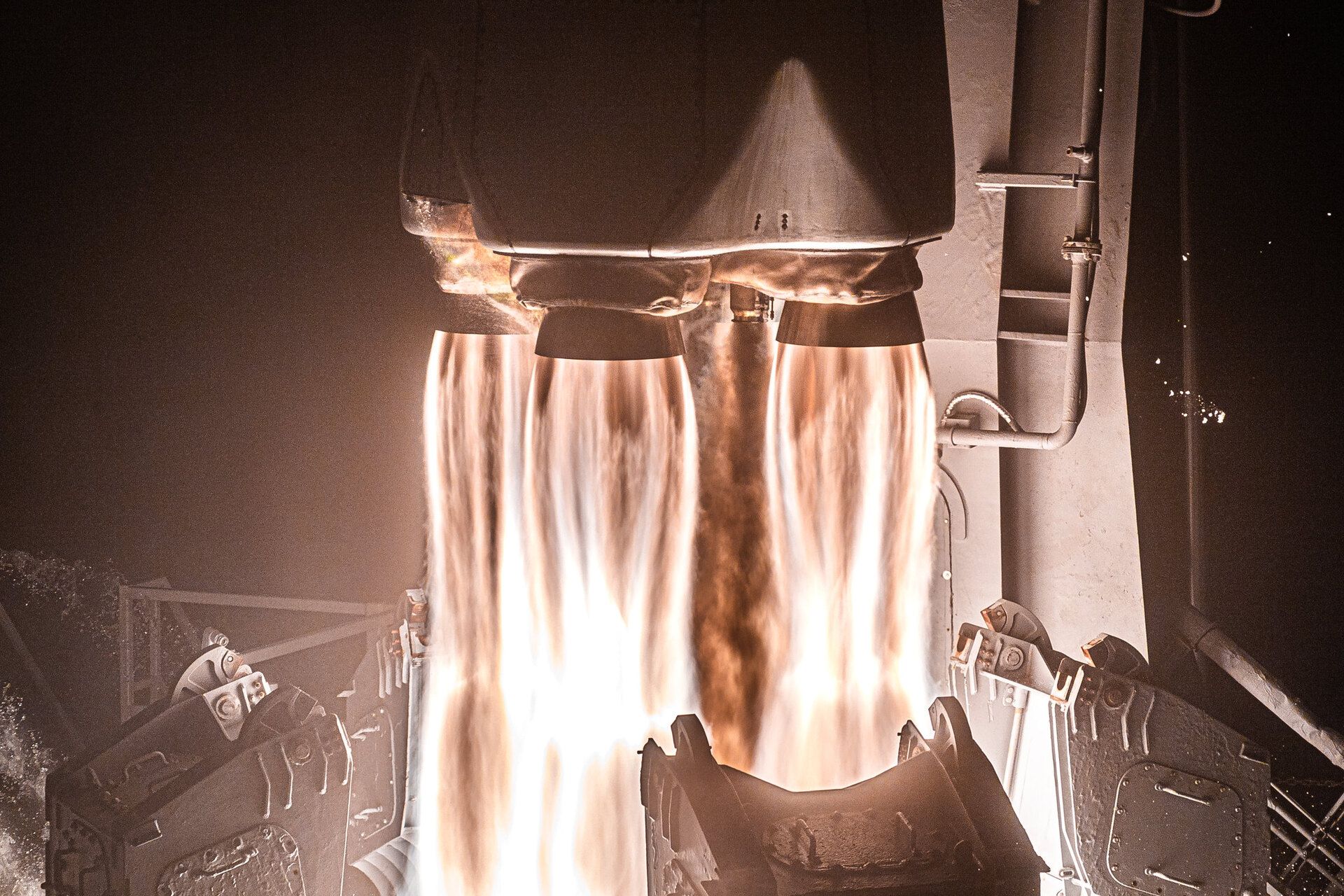
The mission titles “Noise of Summer”, Firefly’s Alpha FLTA005 engine ignition, in July 2024. (Credit: Firefly Aerospace / Trevor Mahlmann)
29 September, 2025
Firefly Aerospace has suffered another setback in its efforts to establish Alpha as a reliable small‑to‑medium launch vehicle. On September 29, the first stage of the company’s seventh Alpha rocket exploded during a preflight static test at its Briggs, Texas facility. Firefly confirmed that all personnel were safe, safety protocols were followed, and damage was limited to the test stand. The incident comes just months after Alpha’s previous mission, Alpha Flight 6 “Message in a Booster” launched on April 29, 2025, ended in failure when the first stage broke apart after separation, damaging the upper stage and leading to the loss of Lockheed Martin’s LM 400 technology demonstrator.
The U.S. Federal Aviation Administration had only recently cleared Alpha to return to flight following that anomaly investigation, which traced the issue to plume‑induced flow separation. With just two fully successful missions out of six attempts since its 2021 debut, Alpha’s reliability remains under scrutiny. Firefly says it will continue testing to refine designs and improve system resilience. Earlier this year, Firefly’s Blue Ghost Mission 1 (which landed on March 2, 2025) was the first fully successful soft landing on the Moon by a commercially built and operated spacecraft.
China’s Geovis Plans 144‑Satellite Constellation for Space Situational Awareness
29 September, 2025
China’s Geovis Insighter Technology is preparing to deploy a 144‑satellite constellation dedicated to space situational awareness (SSA). The company, founded in 2016 and listed on the Beijing Stock Exchange in January 2025, previously developed monitoring software for government use but is now expanding into space‑based observation. Two experimental satellites are scheduled for launch in April, with 12 more to follow by the end of 2026. Operating initially at 500 kilometers, the satellites will track objects between 300 and 2,000 kilometers, with later units in very low Earth orbit to improve precision despite higher fuel demands.
The project aims to provide collision‑avoidance data to both state and commercial operators as satellite numbers surge from networks like Starlink, Kuiper and OneWeb. At the International Astronautical Congress, Chinese researchers stressed transparency and interoperability, though acknowledged that orbital maneuvers often carry dual civil‑military interpretations, complicating international trust and cooperation.
Satellite Operators Urge ITU to Improve Orbital Coordination Protocols

Credit: ITU
30 September, 2025
Satellite operators and international regulators are intensifying calls for improved coordination in orbit, citing growing risks from unmanaged satellite traffic and limited data-sharing protocols. At the International Astronautical Congress, representatives from SpaceX, Amazon, and China’s GalaxySpace among others urged the International Telecommunication Union (ITU) to strengthen communication channels among operators, particularly for sharing orbital ephemerides and maneuver plans. While some bilateral arrangements exist, such as those between SpaceX and Amazon, gaps remain with less responsive actors, raising concerns about potential conjunctions and collision risks.
Ephemerides (plural of ephemeris) are tables or datasets that provide the precise positions of celestial objects such as satellites, planets, or spacecraft, at specific times. In the context of space operations, satellite ephemerides detail an object’s predicted orbital path, including its location and velocity over time. These data are critical for:
Collision avoidance: Operators use ephemerides to forecast potential conjunctions between satellites.
Maneuver planning: Sharing ephemerides helps coordinate orbital adjustments across different operators.
Tracking and observation: Ground stations rely on ephemerides to point antennas accurately.
Without timely and accurate ephemeris exchange, especially among large constellations or across national boundaries, the risk of orbital congestion and unintended collisions increases.
The ITU has acknowledged these challenges, framing space security as a global public good that requires multilateral governance and technical interoperability. As satellite constellations proliferate, the agency emphasizes the need for inclusive frameworks that balance commercial growth with long-term sustainability. Efforts are underway to improve transparency, promote responsible behavior, and ensure equitable access to orbital resources, but tensions persist between rapid private-sector expansion and slower multilateral regulatory adaptation.
New Kayhan Space Tool Enables Real‑Time Visualization of Thousands of Satellites
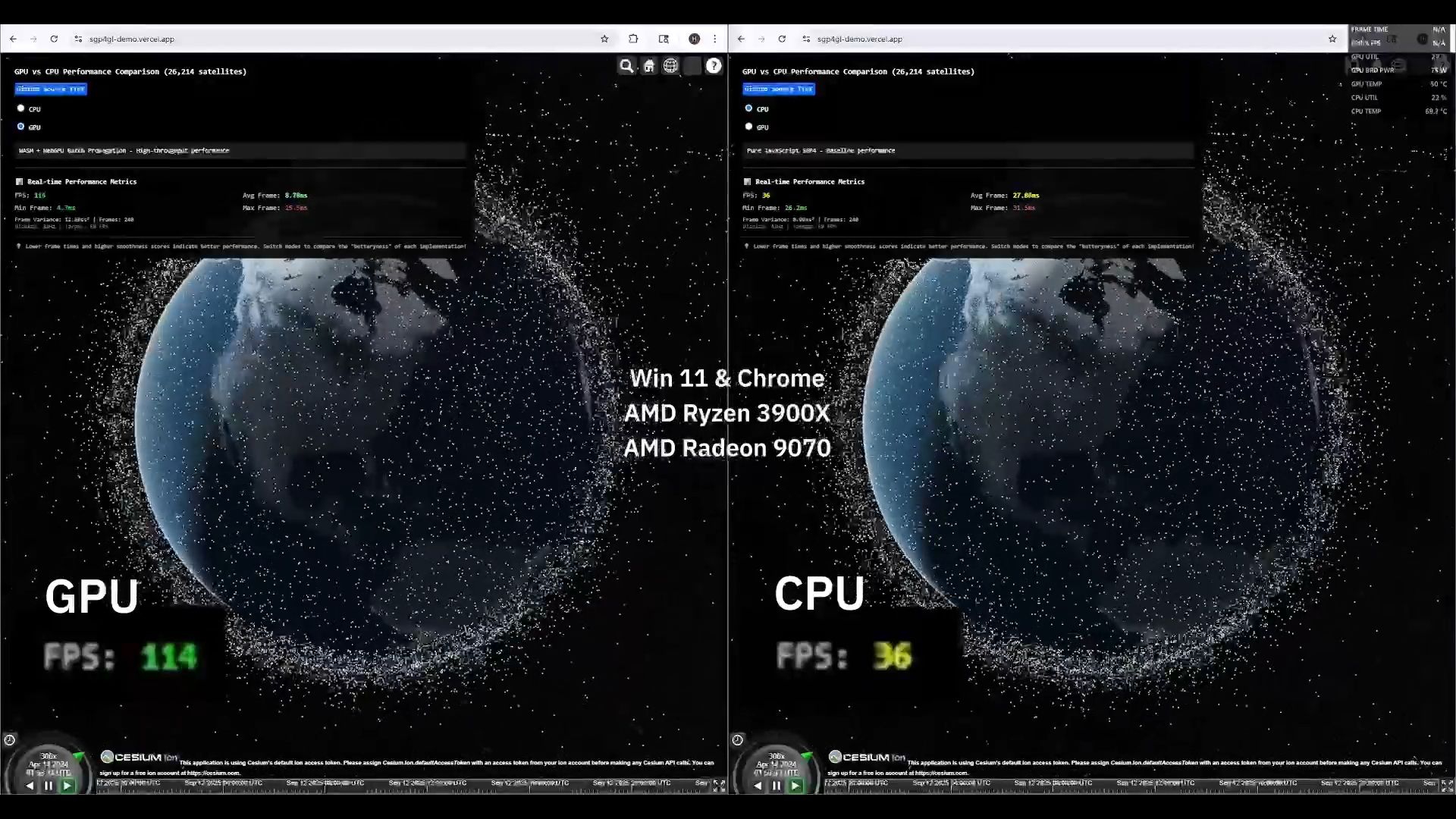
Kayhan Space’s sgp4.gl demonstration illustrates the tool’s ability to display extensive satellite catalogs directly in a web browser. (Credit: Kayhan Space)
30 September, 2025
Kayhan Space has released a free, GPU‑accelerated satellite propagation tool designed to improve real‑time orbital visualization at scale. The software, called sgp4.gl, enables smooth browser‑based modeling of thousands of satellites simultaneously, addressing performance bottlenecks that often limit traditional propagation methods as catalog sizes expand. Built as an offshoot of Kayhan’s high‑fidelity numerical propagator, the tool leverages GPU acceleration to maintain higher frame rates, offering developers and operators a more responsive way to explore orbital dynamics.
Propagation refers to the mathematical prediction of a satellite’s future position and velocity in orbit based on its current state and known physical forces. It uses orbital mechanics models (like SGP4, the “Simplified General Perturbations” model) to calculate how a satellite will move over time under the influence of Earth’s gravity, atmospheric drag, and other perturbations. Propagation is essential for tasks like collision avoidance, constellation management, and visualizing satellite trajectories in real time.
To encourage adoption, Kayhan has also published an open‑source demo integrating sgp4.gl with Next.js and CesiumJS, deployable in minutes on platforms like Vercel. This provides a practical entry point for testing and extending the tool in operational or research environments. The release reflects Kayhan’s broader strategy of contributing to the spaceflight community while advancing its commercial portfolio in space situational awareness and traffic coordination, areas increasingly critical as satellite constellations multiply in low Earth orbit.
Southern Launch and Varda Sign Agreement for 20 Spacecraft Re‑entries at Koonibba Test Range
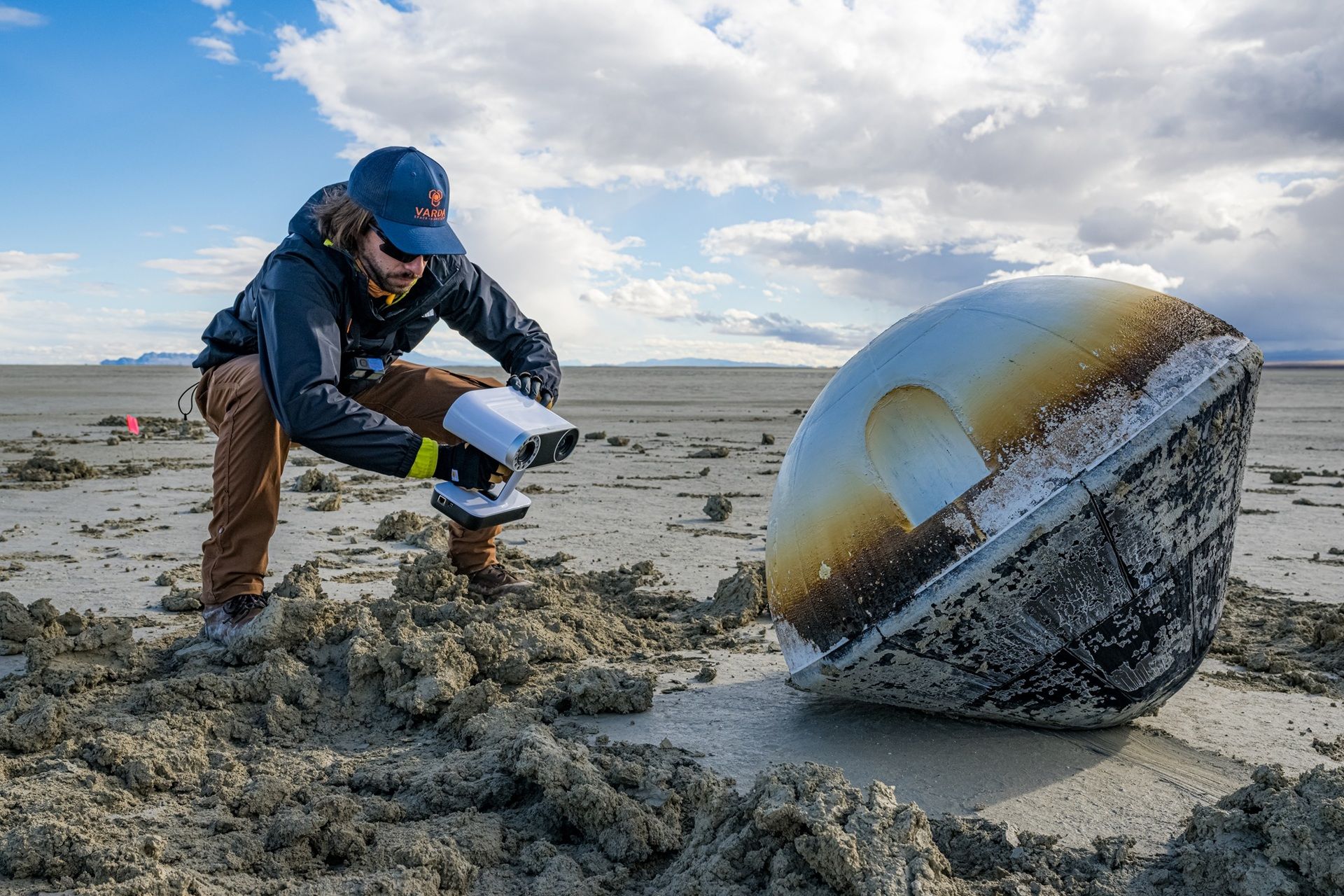
Varda’s W-1 capsule after reentry in February 2024. (Credit Varda, John Kraus)
30 September, 2025
Australia-based launch services provider, Southern Launch and Varda Space Industries have expanded their partnership with a contract covering 20 additional spacecraft re‑entries at the Koonibba Test Range in South Australia through 2028. The agreement follows Varda’s recent W‑Series missions, including the W‑2 capsule, which reentered on February 28, 2025.
The Koonibba site, operated with the Koonibba Community Aboriginal Corporation, provides one of the few land‑based recovery ranges available for orbital returns. Varda’s capsules are designed to carry materials produced in microgravity, such as pharmaceuticals, back to Earth. Officials have framed the new contract as part of a broader effort to establish South Australia as a hub for re‑entry operations, though questions remain about how frequently such missions can be sustained at commercial scale.
Australia and Japan Partner to Advance Next‑Generation Laser Satellite Links
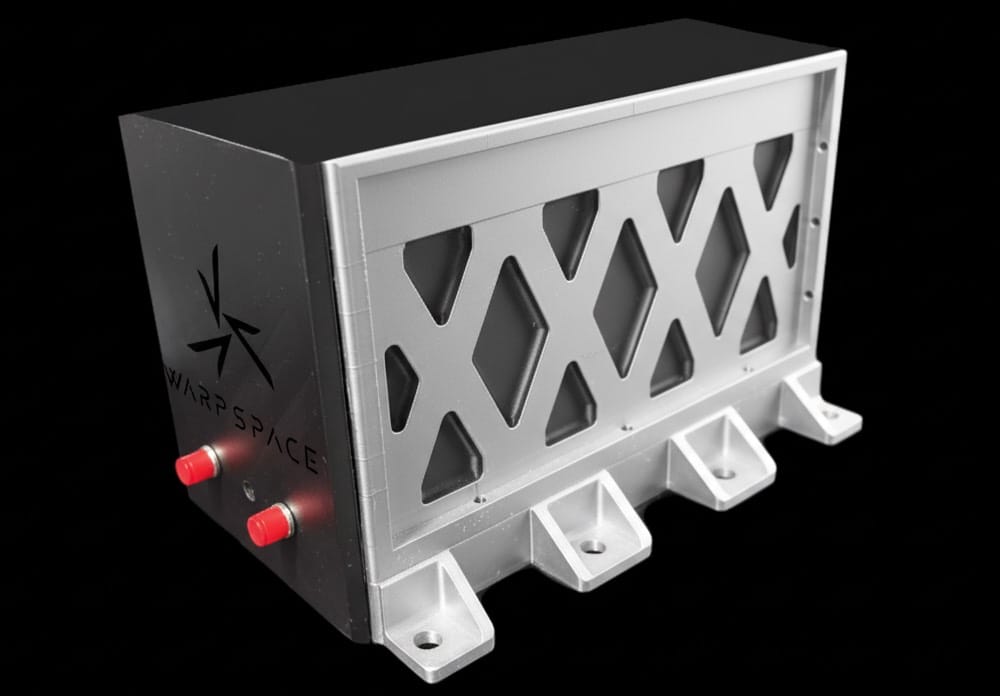
The HOCSAI modem developed by Warpspace aims to enhance laser satellite links by making them faster, more secure, and more dependable. (Credit: Warpspace)
30 September, 2025
Australia and Japan are deepening cooperation on next‑generation satellite communications through a new partnership linking the University of South Australia (UniSA), Adelaide start‑up RapidBeam, and Japanese firm Warpspace. The collaboration centers on testing Warpspace’s HOCSAI optical modem within the Australasian Optical Ground Station Network, a UniSA‑led initiative spanning Australia and New Zealand. Unlike traditional radio systems, laser communications can transmit larger volumes of data with lower latency, making them increasingly relevant for Earth observation, defense, and deep‑space missions.
The partners aim to validate interoperability, reliability, and compliance with international standards through satellite‑to‑satellite and space‑to‑ground trials. For RapidBeam, the work aligns with its longer‑term ambition to build a sovereign 5G satellite constellation, while Warpspace views the project as a step toward expanding its presence in Australia’s space sector. Researchers emphasize that optical links could form the backbone of future high‑capacity networks, though questions remain over cost, scalability, and integration with existing infrastructure.
Maxar Rebrands as Vantor and Lanteris With Focus on AI and Space Systems

This gif shows extracted features in Reynosa, Mexico, including building footprints, road centerlines, and land cover, mapped using satellite imagery and AI. These vectors help authorities establish a reliable baseline view of the town, enabling rapid detection of anomalies such as new structures, unusual container activity, or shifts in traffic patterns. (Credit: Maxar Intelligence)
01 October, 2025
Maxar Technologies has formally disappeared from the space sector landscape, reemerging under two new names following its 2022 acquisition by private equity investor, Advent International. Maxar Intelligence has been rebranded as Vantor, positioning itself as a “spatial intelligence” company rather than a traditional satellite imagery provider. Alongside the rebrand, Vantor unveiled a suite of AI‑enabled tools, including Raptor, which integrates 3D terrain data with drones for GPS‑denied navigation and Sentry, a global monitoring system that fuses multi‑satellite data to track operational activity. Tensorglobe is an AI‑driven platform designed to fuse data from satellites, drones, and ground sensors into a continuously updated 3D model of Earth. The company continues to operate its WorldView and Legion imaging satellites while expanding into multi‑domain intelligence applications for defense and commercial clients.
Meanwhile, Maxar Space Systems has become Lanteris Space Systems, headquartered in California and focused on satellite manufacturing and space infrastructure. Lanteris highlights its role in missile tracking constellations, secure communications, and deep‑space exploration hardware, framing itself as a defense and infrastructure solutions provider.

RESEARCH SPOTLIGHT
James Webb Telescope Maps Weather and Auroras on Nearby on a Sunless Brown Dwarf
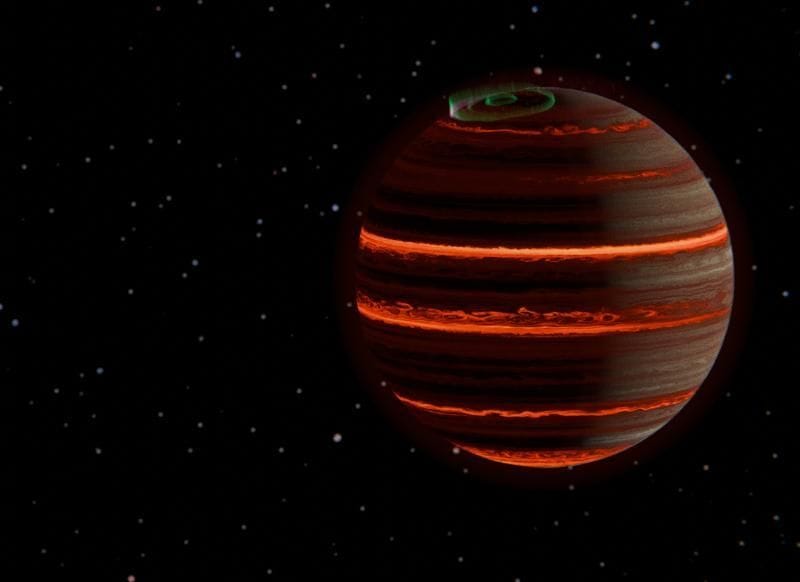
An artist’s impression of the extrasolar world, SIMP-0136. (Credit: Dr Evert Nasedkin).
Astronomers using the James Webb Space Telescope have produced the first detailed “weather report” for a free‑floating world beyond the solar system. The object, known as SIMP‑0136, lies about 20 light‑years away in the Pisces constellation and is classified as a brown dwarf, too small to sustain hydrogen fusion, yet more massive than a planet. Webb’s sensitive instruments tracked subtle brightness changes as the body rotated, allowing researchers to map variations in temperature, chemistry, and atmospheric structure.
The study revealed a surprisingly stable layer of silicate clouds, unlike the patchy systems once suspected. Instead, the most dynamic activity was found higher in the atmosphere, where powerful auroras, driven by an intense magnetic field, heated the upper layers by hundreds of degrees. Deeper down, small temperature swings hinted at storm systems comparable to Jupiter’s Great Red Spot. These results mark the most precise atmospheric measurements yet for a brown dwarf, offering a template for studying weather on giant exoplanets orbiting distant stars. The study with these results was published in the journal Astronomy and Astrophysics.
Free‑Floating Planetary‑Mass Object Observed Consuming Gas and Dust at Extreme Rate
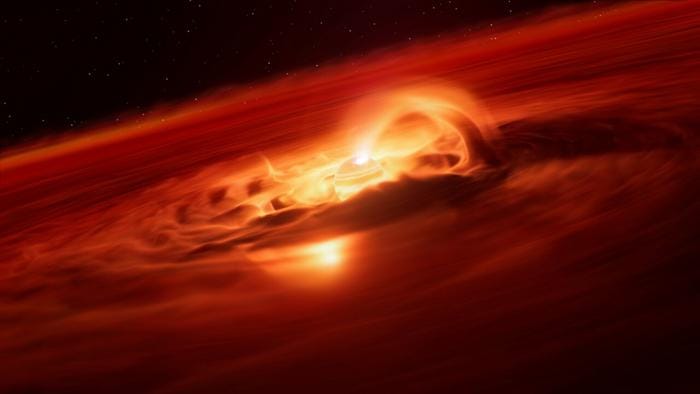
This artist’s impression shows Cha 1107‑7626, a rogue planet about 620 light‑years away and 5–10 times more massive than Jupiter. Unlike planets bound to stars, it feeds on material from a surrounding disk. Using ESO’s Very Large Telescope (VLT), astronomers found it accreting gas and dust at roughly six billion tonnes per second—the fastest rate ever measured for a planetary‑mass body. The team suggests strong magnetic fields may be channeling material onto the planet, a process usually seen in stars. As the infalling gas strikes the surface, it creates a bright hot spot. Observations with the VLT’s X‑shooter spectrograph in mid‑2025 revealed a sharp brightening and spectral signatures of gas, showing the planet is now accreting about eight times faster than only a few months earlier. (Credit: ESO/L. Calçada/M. Kornmesser)
Astronomers have observed a rare growth spurt in a free‑floating planetary‑mass object, challenging assumptions about how such bodies form and evolve. The object, Cha 1107‑7626, lies about 620 light‑years away in the Chamaeleon constellation and is estimated to be five to ten times the mass of Jupiter. Unlike most rogue planets, which drift cold and inert through interstellar space, Cha 1107‑7626 is actively accreting material. Using the European Southern Observatory’s Very Large Telescope and complementary data from NASA’s James Webb Space Telescope, researchers detected it consuming gas and dust at a rate of roughly six billion tons per second, the strongest accretion episode ever recorded for a planetary‑mass body.
Spectral signatures revealed silicates, hydrocarbons, and water vapor appearing during bursts of activity, suggesting a surrounding disk similar to those seen around young stars. The findings blur distinctions between planets and stars, raising questions about whether rogue planets originate as ejected worlds or as low‑mass stellar analogues.
Despatch Out. 👽🛸

Reply